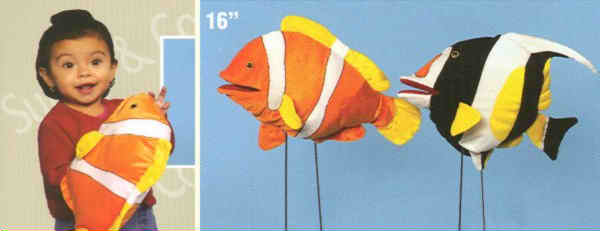Tropical Fish and Aquariums
Dave Klein
The hobby of aquarium keeping and tropic fish as pets is fairly
recent in the Western World, and took a while to catch on. The
keeping of fish in small indoor tanks was only seriously
considered in the middle of the last century, when both in
Britain and the rest of Europe a considerable interest in the
subject developed...
At the beginning of the 1900’s aquarists around the world began
to keep tropical fishes, and it was the "trend" of so doing that
started a new wave of popular fish culture (keeping fish as
pets)...
The older aquarists were obsessed with copying nature in their
tanks—or rather with the attempt to try and copy nature—whereas
the keepers of warm-water fishes had to experiment and create
suitable environments for them...
Often they started only with the knowledge that the fish must
be kept warm, and this in itself raised problems, including the
death of favorite weeds and water snails at higher
temperatures...
So the aquarium gradually came to be regarded as most of us
see it today, as a beautiful display, not a mirror held up to
nature...
However, until the keeping of tropical fish, it seems that
aquarists in general thought that the proper aim of an aquarium
keeper was to reproduce a segment of nature...
They now realize that their task is the maintenance of a highly
artificial and restricted community of animals and plants, with
a balance that can easily topple with disastrous results to at
least some of the members. At the same time, aquariums can
generally be easily maintained as long as a few fundamental
facts are recognized and applied with commonsense to the
problems that arise...
So lets talk now about some of the characteristics of aquariums
and tropical fish...
The old fashioned fish bowl has almost completely
replaced for serious fish-keeping by the rectangular glass
tank, either made wholly of glass or with a metal frame and
glass sides and a bottom of glass, slate, or other rigid
material...
Except when used for spawning, for exhibition purposes, or as a
hospital tank for the treatment of disease, the tank contains
growing, rooted plants; these are set in a sand or gravel layer
1 or 2 inches thick. There may be decorative rocks, but the
chief decoration is usually the plants themselves, which
contribute more to the attractive appearance of a well set-up
tank than do the fishes...
Rectangular tanks are usually between 5 and 25 gallons in
capacity; a 15-gallon tank measures 24 X 12 X 12 inches and is
a favorite size. Smaller tanks than these cannot house many
fish or allow proper development of the plants...
Larger tanks are very attractive and give scope for beautiful
planting arrangements and for fine growth of the fishes, but
they are expensive and not likely to become generally popular.
Most fish lovers therefore prefer a range of medium tanks
rather than one or two very large ones, but it must be
emphasized that fine fishes can be grown in large tanks...
In general, tropical fishes can be housed in smaller tanks than
cold-water fishes. This is because they are usually smaller and
are also better able to withstand a relative deficiency of
oxygen in the water...
Size for size, most tropical fishes can be crowded a good deal
more than the common goldfish and very much more than fancy
varieties of goldfish. A 15-gallon tank might comfortably
contain a dozen 3-inch rosy barbs, four or five 3-inch common
goldfish at the most, and not more than a pair of Orandas of
the same size...
Fish consume solid food and excrete solid faeces. They breathe
oxygen and exhale carbon dioxide, and therefore they tend to
deplete their environment of oxygen and to pollute it with
carbon dioxide and excrement...
Plants also breathe oxygen, but in sufficiently bright light
they manufacture sugars, etc., from carbon dioxide taken from
their surroundings, whether air or water, and they release
oxygen. This is done in the green leaf...
Plants also absorb dissolved salts and use these together with
carbon dioxide in building up complex organic compounds. Very
few higher plants can utilize solid or very complex substances,
and before animal excrement (usually known as "mulm" in the fish
tank) is available to them it must be broken down by fungi or
bacteria and made soluble...
So plants, in adequate light, tend to restore oxygen to the
environment and to remove the waste products of animals. In
poor light or in darkness they deplete the water or air of
oxygen just as animals do. It is only in the daytime, or under
bright artificial light, that they perform the complementary
function to animals...
From these facts grew the concept of a balanced aquarium, with
the waste products of the fishes absorbed by the plants, and
the oxygen necessary for the fishes provided by the action of
the plants in light...
The moral of the story? A well-planted tank with adequate
illumination will usually stay clear and sweet for months or
years with little attention...
Hopefully this article has given you a great insight into
tropical fish as pets and the healthy keeping of aquariums.
Dave Klein is the author of
http://www.tropicalfishltd.com
a comprehensive resource on
tropical fish and aquariums. Visit
http://www.tropicalfishltd.com to learn more about tropical
fish as pets and how to keep them happy and healthy.
Cheerful & Uplifting Stuffed Plush Tropical Fish
